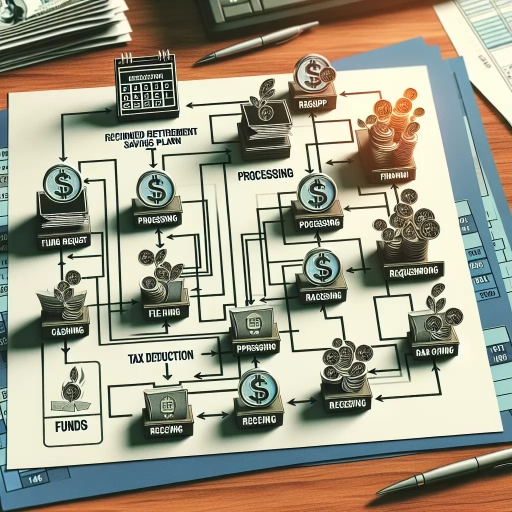How Long Does It Take To Cash Out Rrsp

Understanding the Concept of RRSP
The Origin and Purpose of RRSPs
The concept of a Registered Retirement Savings Plan (RRSP) originated in Canada as a tax-advantaged account designed for individuals to save for their retirement. The primary catalyst behind the creation of RRSPs was to motivate individuals to take responsibility for their own retirement financial goals and to minimize dependency on social security programs. Protecting your long-term financial security is an essential aspect of personal financial planning, and an RRSP plays a crucial role in that.
The Mechanics of an RRSP
Contributions into an RRSP are tax deductible, meaning they can be used to reduce your taxable income for the year. Furthermore, income earned in the RRSP account in the form of interest, dividends, or capital gains is not taxed until it's withdrawn. This "tax deferral" strategy offers two main benefits: it can help lower your current-year tax bill and it allows for your investments to grow tax-free until you're ready to retire and begin withdrawals. The overall philosophy behind an RRSP is based on the assumption that most individuals will be in a lower tax bracket in their retirement years compared to their working years, and thus, will pay less tax on their RRSP withdrawals.
Limitations and Penalties
It is important to note that while RRSPs offer numerous tax advantages, they do come with restrictions and potential penalties for withdrawals before retirement. The primary aim of an RRSP is to provide income during retirement, and therefore, any non-qualifying withdrawals made before retirement age are subject to taxation. Moreover, such early withdrawals also permanently eliminate the contribution room, meaning you forfeit the ability to recontribute the withdrawn amount in future years. This is intended as a deterrent to discourage individuals from dipping into their retirement savings prematurely.
Timeline for Cashing Out RRSPs
Withdrawal Rules and Taxation
Understanding the timeline for withdrawing from an RRSP account is vital, as it significantly impacts the level of taxation you'll face. Generally, you can withdraw money from your RRSP at any time, but there will be tax consequences unless the funds are used for specific purposes such as purchasing your first home or paying for education under the Home Buyers Plan (HBP) or the Lifelong Learning Plan (LLP). Any other withdrawals are considered regular income and will be taxed at your marginal tax rate.
Timelines for RRSP Withdrawal
In terms of how quickly you can access your funds, once you request a withdrawal, it generally takes about 2-3 business days for the transaction to process. However, this timeframe may vary depending on the bank or institution managing your RRSP. The length of time doesn't significantly change whether you're withdrawing funds early or in retirement. But bear in mind that immediate or emergency withdrawals may incur additional fees.
Converting RRSP to RRIF
In Canada, you're required to shut down your RRSP account in the year you turn 71. At this point, you have several options, including taking a lump sum cash withdrawal, purchasing an annuity, or converting your RRSP to a Registered Retirement Income Fund (RRIF). If you choose the RRIF option, this essentially extends the tax-deferred status of your investment while requiring you to make minimum annual withdrawals, which are considered taxable income. The conversion process typically doesn't take more than a couple of weeks.
Optimizing RRSP Withdrawals
Understanding Tax Implications
One of the key considerations when planning RRSP withdrawals is understanding the tax implications. Tax will be withheld by the financial institution processing your RRSP withdrawal at varying rates depending on the amount withdrawn. If tax is not withheld, or if the withholding tax is less than your marginal tax rate, you may owe additional tax when you file your annual income tax return. Planning your withdrawals strategically can minimize your total tax liability and maximize your retirement savings.
Beneficial Strategies for RRSP Withdrawals
There are several strategies that can be beneficial when planning your RRSP withdrawals. For instance, you may wish to start withdrawing from your RRSPs before it is necessary to ensure you are not pushed into a higher tax bracket with mandatory RRIF withdrawals after age 71. Another common tactic is income splitting with a spouse or common-law partner, which can help reduce overall household taxes. Finally, coordinating your RRSP withdrawals with other income sources, such as pensions or investments, can also be an effective strategy.
Getting Professional Advice
Given the complexity of the topic and the potential tax ramifications, consulting with a professional financial advisor is strongly advised when considering RRSP withdrawals. They can help you understand your options, analyze your personal financial situation, and develop a withdrawal strategy that aligns with your retirement goals. Ultimately, how and when you cash out your RRSP can have a significant impact on your retirement lifestyle, so taking the time to plan and get the right advice is crucial.